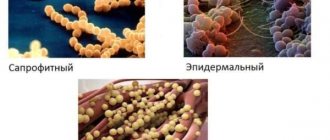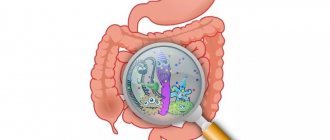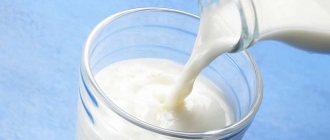An increase in temperature during pancreatitis indicates activation of the inflammatory process in the tissues of the pancreas. But in some patients, the temperature may drop to 35.5°C due to the disease. This is a dangerous symptom that signals collapse or severe dehydration of the body.
An increase in temperature during pancreatitis indicates activation of the inflammatory process in the tissues of the pancreas.
Can there be a fever with pancreatitis?
An inflammatory-degenerative process in the pancreas, since the enzymes produced by the organ do not pass into the duodenum and gradually destroy it. During the development of the disease , an increased body temperature may be observed; how long it will last depends on the characteristics of the body and the severity of the disease.
Important! An extremely high temperature indicates the progression of the inflammatory process, but a sharp decrease in physical value to 35.5 °C also means a sign of acute pancreatitis.
External signs
The acute form of this disease is characterized not only by fever. Patients complain about:
- sharp pain in the mid-abdomen and bloating;
- the appearance of yellowish or blue spots above the belt on the left side;
- repeated vomiting;
- loose stools;
- the appearance of general signs of intoxication.
To establish a diagnosis, the doctor examines the patient. External signs of moderate acute pancreatitis include pale skin and yellowing of the sclera. The disease, which has become severe, is accompanied by the appearance of spider veins and bruises on the skin.
High body temperature and acute form
If the temperature rises within 2 hours during pancreatitis, the reading on the thermometer can reach 39 °C and be expressed as a strong fever. In the case of a favorable course of the disease, the fever will last about 3 days; in severe cases, it can last up to 7 days or longer.
A temperature of 39 °C often indicates the presence of the following complications:
- blood poisoning;
- inflammation of the bile ducts;
- abscess.
Attention! These problems can be fatal, so if a person suspects complications, he should seek medical help immediately.
Clinical picture of acute inflammation
In acute pancreatitis, it is important to promptly recognize signs of complications. Thus, an attack begins with the appearance of swelling of the pancreatic tissue, pancreatic secretions stagnate in the organ, and dead cells become a suitable environment for the proliferation of bacteria and decay products enter the body’s bloodstream.
With an exacerbation of pancreatitis, pain is detected in the left hypochondrium and is described as girdling; often the attack begins after consuming fatty and spicy foods or alcoholic beverages. And also acute inflammation is accompanied by vomiting and dyspeptic symptoms, at the same time there is a temperature above normal.
Some patients doubt whether the temperature with pancreatitis can be abnormally low. Severe intoxication of the body, dehydration - all this leads to the development of vascular collapse or coma, therefore, if there is a sharp drop in body temperature and blood pressure, or a weak pulse, it is necessary to call an ambulance team.
Attention! The hypothalamus is responsible for thermoregulation in the human body, so abnormal temperatures during pancreatitis are aimed at destroying pathogenic substances and accelerating the recovery process.
Peculiarities
Depending on the patient’s condition, the severity of the inflammatory process and the type of pancreatitis, the temperature can be either low or high. For some patients, the readings are constantly changing.
In chronic pancreatitis, the temperature should remain within normal limits. Its sharp increase indicates the activation of the inflammatory process and the transition of pancreatitis to an acute form. Sometimes temperatures rise to subfebrile levels.
With calculous
Calculous pancreatitis is characterized by the formation of stones in the pancreatic ducts. Their size gradually increases. The reason for their appearance and growth is a disruption in the process of outflow of fermented gland secretions.
The appearance of low-grade fever in chronic calculous pancreatitis should alert you. Indeed, with this form of the disease, the appearance of malignant tumors is often diagnosed.
Exacerbation of the disease
In case of chronic pancreatitis, it is important to monitor your diet and not break your diet. Otherwise, exacerbations cannot be avoided. It begins with the appearance of acute abdominal pain, vomiting, diarrhea, and hyperthermia. Treatment should be prescribed immediately when the first signs of the disease appear.
In acute form
Acute pancreatitis is manifested by pain, nausea, and vomiting. Many patients experience diarrhea and hyperthermia.
Acute pancreatitis is not always accompanied by high fever. It may be absent or rise to low-grade levels.
In children
In children, pancreatitis occurs against the background of other pathologies of the gastrointestinal tract; the symptoms of pancreatic diseases are blurred. The inflammatory process that has begun can easily be confused with gastritis, intestinal dysbiosis, or gastroduodenitis.
You can determine pancreatitis in a child if you know that the following symptoms are characteristic of its development:
- low-grade fever;
- pale skin;
- marbling or cyanosis of the limbs and face;
- complaints of dry mouth;
- white coating on the tongue.
The temperature rises with necrosis of pancreatic tissue or purulent pancreatitis.
Clinical picture of chronic pancreatitis
In chronic pancreatitis, destructive processes in the organ continue, but there are no pronounced symptoms of the disease.
Damaged tissues are no longer restored, and the process of their replacement with fibrous tissues occurs slowly, but the person feels healthy and does not turn to a specialist.
During the period of remission, body temperature remains within normal limits, with the exception of cases when the fever is insignificant due to inflammation of the pancreas.
For example, an evening temperature of 37 °C in a person indicates a sluggish inflammatory process; it can last for several months and end in an acute attack.
Important! When heat exchange increases, you should be wary, as the body's immune system is activated. During this period, abdominal pain, mild nausea, decreased blood pressure and loose stools appear - such signs in the remission stage are often ignored, and the disease progresses.
The patient suffers from discomfort after eating heavy food, but sometimes pain can appear when refusing food. Unpleasant sensations decrease when sitting and increase when lying down.
Characteristic
In acute pancreatitis, the temperature remains within subfebrile values. Over the course of 2-3 days, the thermometer will show 37.2...37.4°C. It is necessary to follow a special diet so as not to provoke a worsening of the condition.
If the thermometer shows above 38°C, this indicates that the disease has become severe. It will be difficult to normalize the functioning of the pancreas on your own. At a temperature of 38...39°C there is a risk of complications. The patient may experience internal bleeding and purulent pancreatic necrosis.
Low
Fever does not always occur with pancreatitis. A decrease is possible when pancreatitis becomes acute. This condition is dangerous, because at low temperatures there is a high probability of:
- internal bleeding;
- dehydration of the body;
- painful shock.
You should be wary of the low temperature, which stays around 35.5°C. At the same time, the patient’s blood pressure decreases, the skin turns pale, and the pulse weakens. Many are taken to the hospital in an unconscious state. If medical care is not provided in a timely manner, the patient may die.
With the development of pancreatitis, food is poorly digested, and processes of fermentation and active proliferation of microbes begin in the gastrointestinal tract. Pancreatic cells that have become necrotic under the influence of their own enzymes become a favorable environment for the development of pathogenic microflora.
Toxins and waste products of bacteria enter the bloodstream, and the infection spreads throughout the body. The hypothalamus receives a signal from the protective components of the blood and triggers processes that lead to an increase in temperature.
With elevated body temperature in the body:
- metabolic processes are accelerated;
- protective forces are activated;
- the number of immune cells that synthesize interferon increases.
When the infection spreads, patients complain of high fever, muscle pain, chills, and weakness. These are signs of intoxication and incipient dehydration of the body.
Low-grade fever
With mild pancreatitis, fever does not always appear. The temperature can be normal or low-grade. The standard level is considered to be up to 37...37.4°C. If on the first day the values remain around 37 degrees, and on the 2-3rd day of illness they rise to 38 degrees, this indicates a deterioration in the condition.
Some patients may remain low-grade fever for many months. This signals that, against the background of chronic pancreatitis, degenerative changes continue in the pancreas. Damaged tissues are not restored, they are replaced by fibrous ones.
Body temperature during pancreatic necrosis
With pancreatic necrosis, the cells of the pancreas die, and the organ itself is subjected to destructive processes, which is characterized by rapid progression.
As a result of the failure, bloating occurs in the abdomen, constipation occurs, and the further course of the disease leads to intoxication of the body.
Body temperature can vary from 38 to 40 °C, and the following signs of pancreatic necrosis are also observed:
- increased heart rate and breathing movements;
- dyspnea;
- decrease in blood pressure.
As toxins spread, confusion develops, and the most severe consequences of the disease are coma and death. A sharp increase in body temperature and the formation of pancreatic necrosis are most often observed in patients with diseases of the digestive tract , liver pathology and cholelithiasis.
Mechanism of development of pancreatic necrosis
Several factors contribute to the occurrence of the disease, and no matter what temperature is observed in the patient, it is important to establish the cause of the development of the pathology. Most often, the destructive process is triggered by alcoholic drinks and large amounts of junk food; less often, blockage of the pancreatic duct occurs, which leads to the activation of its enzymes.
Important! In some cases, the causes of the disease are abdominal injuries, postoperative complications and structural anomalies of the organ, as well as food poisoning.
Pancreatic necrosis is also called a disorder of the gland's defenses. So, at first, the secretion of the organ increases, the outflow of pancreatic juices is disrupted and its tissues swell, while the temperature in the evening remains at 37 ° C, but then parts of the gland begin to collapse and toxins enter the blood, causing a person to feel feverish.
The kidneys and liver, heart and brain are affected, and an abscess forms in the pancreas, then similar changes occur in the retroperitoneal tissue.
How long does it last?
How long the temperature lasts during the disease depends on its nature. Thus, an acute reaction to a painful attack lasts no more than 3 hours, and with a sluggish form of pancreatitis, the temperature will rise and fall constantly, but only slightly - a person spends an average of several months in this state.
Important! Most often, a patient experiences fever in the evening, when the main meals are already over and the body is in a relaxed state. Sometimes a person does not know what to do about this problem or mistakes it for symptoms of another disease.
Does fever occur with pancreatitis in adults and why can’t it be ignored? The fact is that at the stage of edematous pancreatitis, an increase in temperature does not cause discomfort to a person and he feels satisfactory - pathological changes have not yet reached their maximum. Periodic fluctuations in thermometer readings can last from 4 to 10 days, after which remission is established or complications develop. It is very difficult to fight them.
What to do if you get promoted?
It is important to know what to do if a temperature of 38 °C is combined with signs of pancreatitis. Before the ambulance arrives, the person must take a sitting position and tilt his torso forward, while he must not make sudden movements or lie down, and he is also prohibited from eating food.
Drink water every 30 minutes in small sips; if possible, an injection of No-shpa or Papaverine (2 ml) intramuscularly is indicated. To relieve pain, a bag or ice pack is applied to the patient's abdomen (epigastric area).
Before lowering the temperature during pancreatitis, set aside analgesics - they will make the picture of the disease less clear, and the work of doctors will be difficult. As a rule, simple techniques can reduce the fever, but if a person has experienced an attack of pancreatitis and feels well, he should go to the hospital as soon as possible.
Important! Pancreatitis is treatable, and the success of therapy depends on the stage of the disease, so it is rational to start taking medications as soon as possible.
Fighting methods
The main method of control is taking antipyretic tablets. However, they must be used carefully. In case of exacerbation or acute course of pancreatitis, tablets can worsen the condition due to a toxic effect. The disease may be accompanied by vomiting, so the pills simply do not have time to be absorbed. If you have a high temperature, it is best to call an ambulance. The specialist will decide whether it is necessary to reduce the fever and what drug should be used.
Drug therapy
A person can use Paracetamol to relieve fever. It is enough to use half a tablet to reduce the temperature to 37.5-39 degrees. The drug will also help relieve some of the pain. The medicine is well tolerated and rarely causes side effects, but it cannot always be used. If fever and severe pain occur, it is not recommended to use any medications on your own due to their toxicity.
Maintaining hydration is important at high temperatures
The doctor will select the appropriate analgesic, antipyretic and prescribe the dosage. Before this point, it is advisable not to use specialized drugs. In addition, enzymes, antispasmodics, proton pump blockers and H2 inhibitors are prescribed for therapy.
You can learn more about the treatment of the disease from the video:
Folk remedies
Due to the low digestibility of natural components, it is not recommended to use traditional methods. With indolent lesions, drinking plenty of fluids is allowed. In some cases, your doctor may allow you to drink raspberry tea, but in small quantities. Various herbs are used only for the chronic form of the disease.











